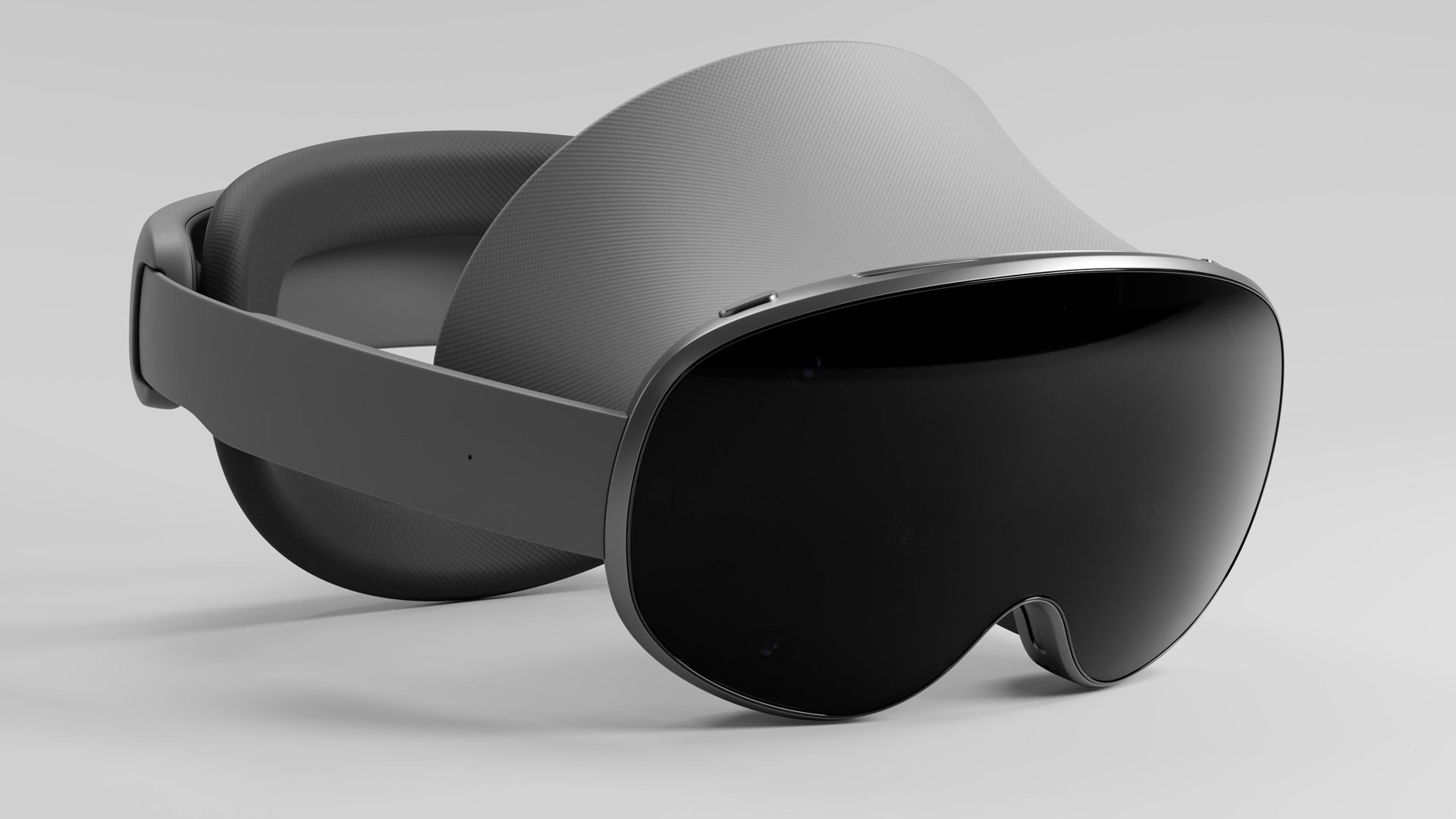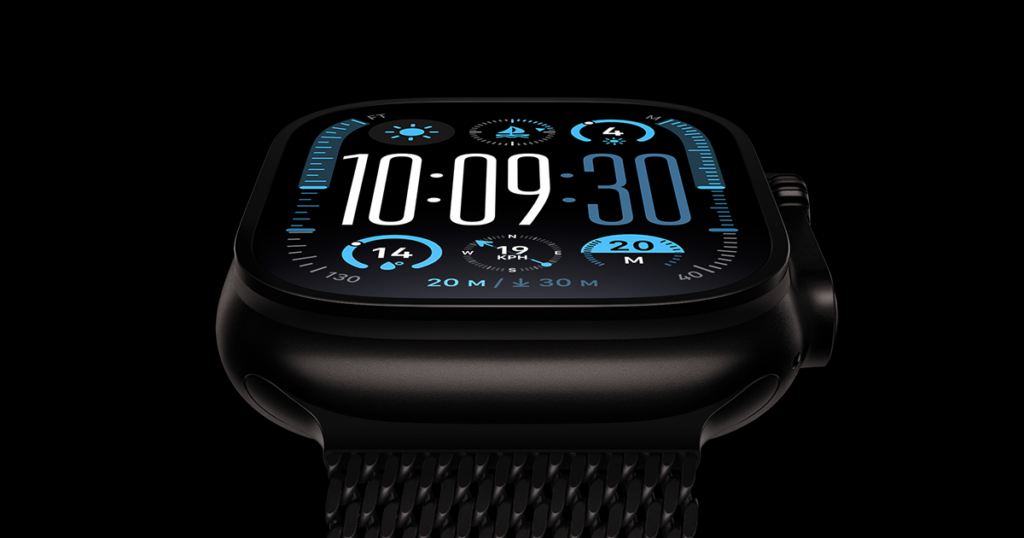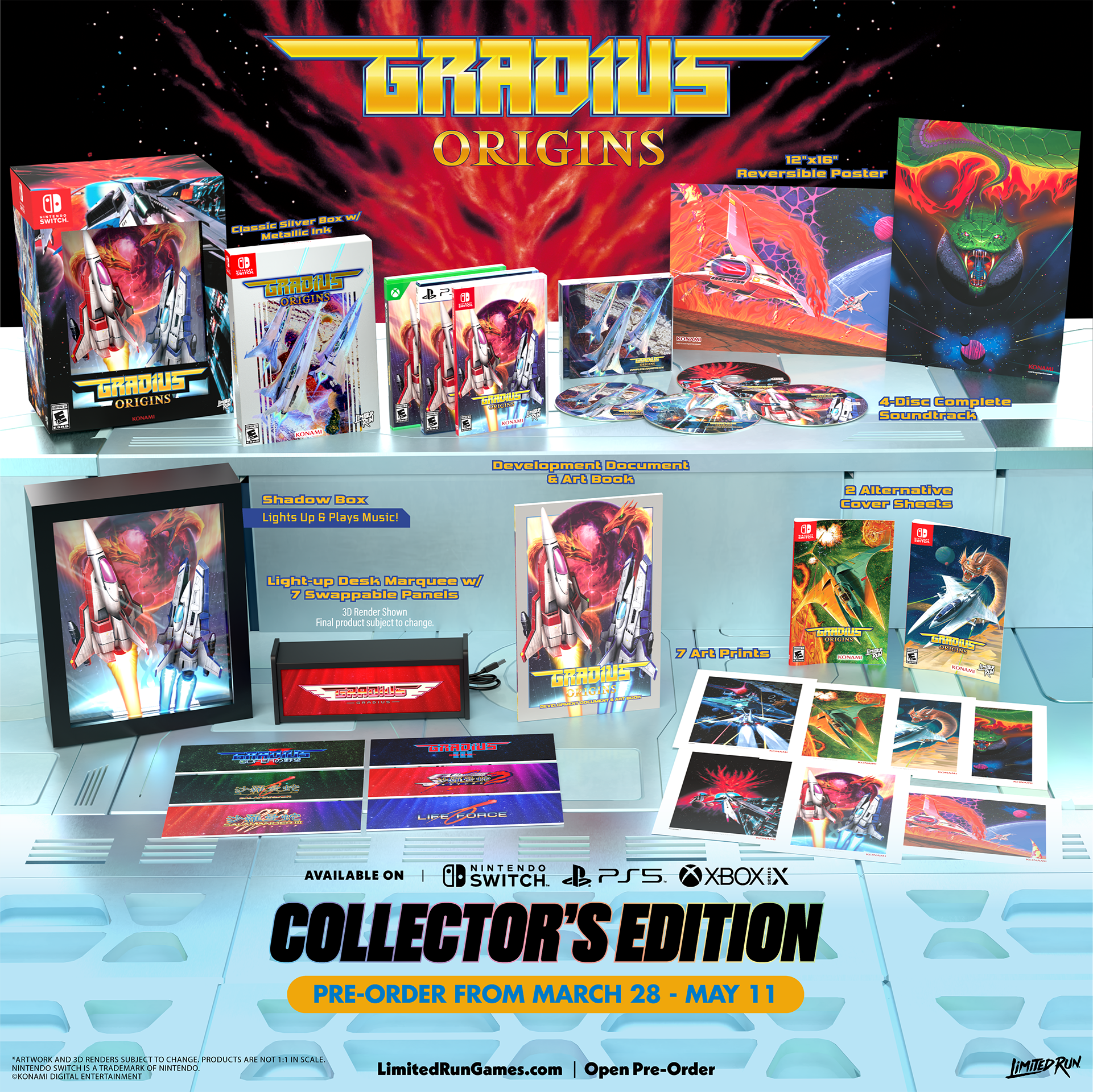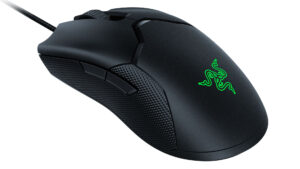- Gaming
- GamingGaming reviews, news and comparisons.
- PlayStation
- XBoxXBox news, reviews and more.
- Nintendo Switch 2Nintendo Switch 2 news, reviews and more.
- Collectors EditionsCollectors edition news, reviews and more.
- ControllersController news, reviews and more.
- Handhelds
- Audio
- HeadphonesHeadphone news, reviews and more.
- PC SpeakersPC Speaker news, reviews and more.
- SoundbarsSoundbar news, reviews and more.
- Smartphones
- Tablets
- PC’sPC reviews, news and comparisons.
- PC’sPC reviews, news and comparisons.
- Monitors
- Graphics CardsGraphics Card news, reviews and more.
- KeyboardsKeyboard news, reviews and more.
- Mice
- Mouse PadsMouse Pad news, reviews and more.
- Laptops
- LaptopsLaptop reviews, news and comparisons.
- Cooling PadsLaptop cooling pad news and information.
- Streaming
- WearablesWearable reviews, news and comparisons.
- Cameras
- CollectibleFigure news, reviews and more.
- Shop
- Gaming
- GamingGaming reviews, news and comparisons.
- PlayStation
- XBoxXBox news, reviews and more.
- Nintendo Switch 2Nintendo Switch 2 news, reviews and more.
- Collectors EditionsCollectors edition news, reviews and more.
- ControllersController news, reviews and more.
- Handhelds
- Audio
- HeadphonesHeadphone news, reviews and more.
- PC SpeakersPC Speaker news, reviews and more.
- SoundbarsSoundbar news, reviews and more.
- Smartphones
- Tablets
- PC’sPC reviews, news and comparisons.
- PC’sPC reviews, news and comparisons.
- Monitors
- Graphics CardsGraphics Card news, reviews and more.
- KeyboardsKeyboard news, reviews and more.
- Mice
- Mouse PadsMouse Pad news, reviews and more.
- Laptops
- LaptopsLaptop reviews, news and comparisons.
- Cooling PadsLaptop cooling pad news and information.
- Streaming
- WearablesWearable reviews, news and comparisons.
- Cameras
- CollectibleFigure news, reviews and more.
- Shop
Now Reading: Project Moohan Everything We Know So Far
-
01
Project Moohan Everything We Know So Far
- Gaming//
- Gaming//Gaming reviews, news and comparisons.
- PlayStation//
- XBox//XBox news, reviews and more.
- Nintendo Switch 2//Nintendo Switch 2 news, reviews and more.
- Collectors Editions//Collectors edition news, reviews and more.
- Controllers//Controller news, reviews and more.
- Handhelds//
- Audio//
- Headphones//Headphone news, reviews and more.
- PC Speakers//PC Speaker news, reviews and more.
- Soundbars//Soundbar news, reviews and more.
- Smartphones//
- Tablets//
- PC’s//PC reviews, news and comparisons.
- PC’s//PC reviews, news and comparisons.
- Monitors//
- Graphics Cards//Graphics Card news, reviews and more.
- Keyboards//Keyboard news, reviews and more.
- Mice//
- Mouse Pads//Mouse Pad news, reviews and more.
- Laptops//
- Laptops//Laptop reviews, news and comparisons.
- Cooling Pads//Laptop cooling pad news and information.
- Streaming//
- Wearables//Wearable reviews, news and comparisons.
- Cameras//
- Collectible//Figure news, reviews and more.
- Figures//Figure news, reviews and more.
- Replicas//Replica news, reviews and more.
- Shop//
Project Moohan Everything We Know So Far

Project Moohan is Samsung’s upcoming mixed reality (MR) headset, developed in collaboration with Google and Qualcomm, and powered by the Android XR platform. Announced in December 2024, it’s designed to compete with high-end XR devices like Apple’s Vision Pro and Meta’s Quest 3. Below is a comprehensive overview of everything known about Project Moohan based on available information up to April 22, 2025.
Overview
Name and Meaning: “Moohan” translates to “infinity” in Korean, symbolizing Samsung’s ambition for limitless immersive experiences.
Release Timeline: Expected to launch in 2025, with a developer kit already unveiled in December 2024. A consumer release is speculated for mid-2025, potentially aligning with the holiday season. Mass production is reportedly set for April 2025.
Purpose: As the first headset to run Google’s Android XR platform, Moohan aims to showcase advanced AI integration, multimodal inputs, and a robust software ecosystem to rival Apple’s VisionOS and Meta’s Horizon OS.
Hardware Details
While Samsung has been secretive about specific technical specs, hands-on prototypes and reports reveal the following:
Processor: Powered by Qualcomm’s Snapdragon XR2+ Gen 2 chipset, a more powerful variant than the chip in Meta Quest 3 and 3S, promising low-latency (as low as 12ms) and high-performance AR/VR experiences.
Design
Resembles a blend of Apple Vision Pro (goggle-style glass front) and Meta Quest Pro (rigid strap). No external “EyeSight” display like Vision Pro, focusing instead on a sleek, lightweight form factor.
Features a rigid headstrap with a tightening dial for stability, a soft forehead pad, and an optional light seal for immersive or open-periphery modes.Includes a detachable external battery pack connected via USB-C, with the flexibility to use third-party battery packs for extended life.Eight front-facing cameras and two internal cameras for eye tracking, supporting passthrough and mixed reality. Capacitive control strips are present on the sides.
Lenses and Display
Uses pancake lenses, though reportedly not as advanced as those in Quest 3 or Vision Pro.
High-resolution displays with foveated rendering (sharpest at the center of vision) and automatic interpupillary distance (IPD) adjustment via eye-tracking.Visual quality is sharp in the center but may pixelate slightly in color passthrough mode.
Comfort
Lightweight design optimized for extended wear, with better heat management and weight distribution than Vision Pro in early tests.
No top strap (unlike Vision Pro), but the rigid strap and padded headrest ensure comfort.
Input Methods
Supports hand tracking (pinch, zoom, swipe gestures), eye tracking for UI navigation, and voice commands via Google’s Gemini AI.
Controllers are planned but may be sold separately; Bluetooth keyboards and mice are supported for productivity.
Other Features
Prescription lens inserts available for users with corrective needs.
Downward-facing cameras improve hand tracking accuracy, even when hands are on the lap.
Software and AI Integration
Operating System: Runs Android XR, Google’s first OS tailored for XR devices, designed for seamless AR, VR, and MR experiences. It supports standard Android apps (e.g., Maps, YouTube, Chrome) and offers a customizable, immersive interface similar to VisionOS and Horizon OS.
Google Gemini AI
A standout feature, Gemini provides multimodal, context-aware interactions. It can see and analyze the user’s surroundings in real-time, answer questions about objects, and remember past interactions for a consistent experience.
Examples include asking Gemini to identify a book’s location (e.g., Wadi Rum, Jordan) and opening Google Maps in 3D, or querying a record’s band for top hits.Features “Circle to Search” for gesture-based object selection and exploration, and immersive modes for apps like Google Photos, which can simulate depth in 2D media.Gemini Live runs in the background, allowing voice commands anytime, enhancing accessibility.
App Ecosystem
Google Play Store support ensures compatibility with most Android apps, with native XR versions of Google Maps, YouTube, Google Photos, and Google TV.
Developers can port existing XR apps from other platforms (e.g., Meta Quest) with Unity support, potentially building a robust library at launch.Virtual Desktop support is confirmed, suggesting PC VR gaming capabilities.
User Interface
Windows can be freely placed in the environment, with pinch-and-grab gestures to resize and move them.
Eye tracking enables foveated rendering and intuitive navigation, though calibration is slightly faster than Vision Pro’s.
Market Positioning and Competition
Competitors: Positioned as a direct rival to Apple Vision Pro ($3,499) and Meta Quest 3 ($499) and Quest 3S ($299). Moohan aims for a premium yet potentially more affordable price point than Vision Pro, with estimates ranging from $1,500 to $3,000.
Strengths
Gemini AI’s deep integration offers a more natural, context-aware experience than Vision Pro’s Siri or Meta’s AI assistants.
Android XR’s open ecosystem and app compatibility could outpace VisionOS’s closed system and Quest’s gaming-focused library.Modular design (e.g., optional light seal, third-party battery support) adds versatility.
Challenges
Lacks Vision Pro’s premium build and EyeSight feature, which some users value for social interaction.
Pancake lenses may lag behind competitors in optical quality.Pricing remains uncertain, and a high cost could limit mass-market appeal compared to Meta’s affordable Quest lineup.Still in prototype phase, so features like resolution, field of view, and battery life are unconfirmed and may change.
Public Showcases and Hands-On Impressions
Announcements and Events:
Unveiled in December 2024 alongside Android XR at a developer event in New York City.
Showcased at Galaxy Unpacked 2025 (January) and Mobile World Congress (MWC) 2025 (March 3–6), though demos were limited to viewing or controlled hands-on sessions.
Hands-On Feedback
YouTuber Marques Brownlee (MKBHD) noted the headset’s Vision Pro-like design but praised its AI-driven features, particularly Gemini’s real-world interaction capabilities.
Testers like those at The Verge and WIRED found the headset comfortable and the Gemini integration transformative, though some reported minor issues like pixelation in passthrough mode or cramped visuals due to IPD calibration.Compared to Vision Pro, Moohan feels lighter and cooler during use, with a more intuitive AI assistant but slightly lower display sharpness.
Additional Context
Samsung’s XR Strategy: Moohan marks Samsung’s return to XR since the Gear VR (2015), aiming for professionals, developers, and enthusiasts rather than casual users. Samsung is also developing AR glasses (codenamed “Haean”), potentially launching by late 2025, indicating a broader XR roadmap.
Google’s Role: Google’s Android XR platform is built for the “Gemini era,” leveraging AI advancements to differentiate from past failures like Google Glass. The platform supports both headsets and future AR glasses, with a focus on developer adoption.
Qualcomm’s Contribution: The Snapdragon XR2+ Gen 2 chip ensures Moohan can handle demanding MR tasks, positioning it as a high-performance device.
Speculated Price and Availability
Price: Rumored to range from $1,500 to $3,000, positioning it as a premium device but potentially more affordable than Vision Pro. Exact pricing remains unconfirmed.
Availability: A developer-first approach suggests initial limited release, with consumer availability expected later in 2025. Pre-order perks or bundles may be offered to compete with Meta and Apple.
Critical Perspective
While Moohan’s AI integration and Android XR platform are innovative, its success hinges on pricing, software polish, and developer support. The headset’s premium positioning risks alienating budget-conscious consumers, especially against Meta’s affordable Quest lineup. Additionally, Samsung’s reluctance to share detailed specs raises concerns about whether it can match Vision Pro’s build quality or Quest’s gaming ecosystem.
The focus on Gemini AI is a bold move, but public skepticism toward generative AI could hinder adoption unless Samsung and Google demonstrate clear, practical value.
Related Posts
Wearables8 months ago
Apple Watch Series 11 Soon?
Stay Informed With the Latest & Most Important News
Previous Post
Next Post
Previous Post
Next Post
Gaming1 month ago
GTA 6 (VI) New Screenshots






























